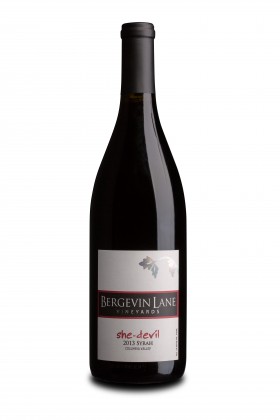Left Coast Wines from Washington, Oregon and California are Enough to Keep Any Wine Lover Happy
- Posted by Dan Radil
- Posted on August 1, 2017
- Past Articles
- No Comments.
This article originally appeared in the August, 2017 issue of Bellingham Alive Magazine
What would happen to the wine industry in the United States if, by some crazy chance, Washington, Oregon, and California were hit by a devastating plague that wiped out every vineyard in the three-state area? Would it be the “end of the world,” so to speak, for domestic wine drinkers?
Without a doubt, the answer to that highly unlikely scenario is a resounding ‘yes.’
Certainly, California is far and away the biggest producer of premium wines in the United States, but Washington and Oregon are responsible for their fair share as well.
In fact, the three states accounted for nearly 91% of last year’s total US wine production, according to Alcohol and Tobacco Tax and Trade Bureau statistical reports. California, Washington, and Oregon rank first, second, and fifth respectively, leaving the remainder of the country with a mere fraction of today’s wines that one might consider comparable in quality.
The number of licensed wineries in each state is just as impressive, with the three left-coast states claiming the top three spots with a total of well over 5,500 wineries.
The key to this embarrassment of wine-related riches is the Western United States’ combination of just the right blend of climate and geography: a varied base of volcanic soils, coastal regions blessed with the cooler influences of the Pacific Ocean (perfect for growing Pinot Noir and Pinot Gris grapes), and areas with abundant sunshine and sufficient heating degrees to ripen warmer climate grapes such as Chardonnay and Cabernet Sauvignon.
It all adds up to some pretty impressive stuff, and in terms of sheer volume alone, the Washington-Oregon-California wine connection is enough to keep any domestic wine lover swimming in quality wines and wineries.
WASHINGTON FROM BOTH SIDES
 A handful of wine grapes flourish in Washington’s cooler Puget Sound region and the wines they generate are, more often than not, characterized by lighter body styles and refreshingly high acidity levels.
A handful of wine grapes flourish in Washington’s cooler Puget Sound region and the wines they generate are, more often than not, characterized by lighter body styles and refreshingly high acidity levels.
A great example is the San Juan Vineyards 2016 Siegerrebe (about $21). Grown on the island’s only commercial vineyard, Siegerrebe is a hybrid between the Gewurztraminer and Madeleine Angevine grapes. The resulting wine is brimming with spicy aromatics and flavors of lychee and lemon/lime citrus, while the 1.4% residual sugar content is nicely balanced by slightly higher-than-normal alcohol and bracing acidity on the finish.
A move to Eastern Washington provides you with bigger, bolder, and more full-bodied red and white wines that have benefited from the region’s near desert-like climate that frequently yields less than 10 inches of precipitation annually.
The Bergevin Lane Vineyards 2013 She-Devil Syrah (about $24) is sourced from two, warmer Eastern Washington wine regions; the Wahluke Slope and the Walla Walla Valley, where the winery is located. Smoky aromatics are followed by dark, understated blackberry flavors and nuances of toasted oak on the finish. The wine was co-fermented with Viognier grapes and a splash of Malbec was added in to lend just the slightest touch of peppery spice.
OREGON’S WILLAMETTE VALLEY
Talk about Oregon wines and the Willamette Valley American Viticultural Area (AVA) will invariably enter the conversation. The Valley stretches from Portland on Oregon’s northern border, to just beyond the city of Eugene to the South.
The region is responsible for over 70% of both the state’s planted vineyard acreage and total wine production. And 80% of Oregon Pinot Noir production, the crown gem of the state’s wine scene, is generated within the Willamette Valley.
The Valley consists of a number of sub-appellations, one of which is the Chehalem Mountains AVA. There you’ll find a relatively newer winery, Rain Dance Vineyards, located in Newberg and founded in 2009. Their 2015 Estate Pinot Noir (about $40) is a grand slam, and most definitely worth a try.

And if you think the Oregon is one-dimensional in its wine production, be sure to check out Chardonnays from the Willamette Valley region as well. A notable example, also from Rain Dance Vineyards, is the 2015 Estate Chardonnay (about $30). This wine’s base of apple and pear is accentuated with both edgier notes of bright citrus and a softer, creamier touch of lemon chiffon.
CALIFORNIA’S OLD GUARD
Located in Livermore, just east of the San Francisco Bay area, you’ll find Wente Vineyards, a family-owned, fifth generation winery that originated in 1883.
Wente produces a number of varietals, but the current release of their 2016 Morning Fog Chardonnay (about $15) really shines in terms of solid winemaking at a highly affordable price. It opens with aromas and flavors of ambrosia and marshmallow cream, with juicy pear flavors on the mid-palate and a hint of vanilla bean on the finish.
Another long-time California winery, Mendocino County’s Parducci Wine Cellars, will celebrate its 85th anniversary this year. Parducci also has West Coast wineophiles covered with an impressive array of current releases.
Start with the Parducci 2014 Small Lot Cabernet Sauvignon (about $13), which features red fruit flavors of currant and plum along with subtle tannins. It’s a nice alternative for those who prefer their Cabernets a bit lighter in body.
On the other side of the coin, Parducci also offers a pair of heavier hitters. The Tie-Dye 2014 Red Blend (about $15) explodes with raspberry aromatics, a core of dark berry fruits, and nice acidity; while the ZinPhomaniac 2015 Lodi Zinfandel (about $15) offers brambly berry and ultra-dark cherry flavors and a long finish with sweet cedar and baking spice. Old Vine Zinfandel may be California’s quintessential grape, and this wine’s whimsical character proves that even “old-timers” can still have fun with it.
Categories
- Events
- Food & Wine
- FrontPage
- Heard Through the Grapevine
- New Northwest Wine Recommendations
- Past Articles
- Recommendations from the Archive
Things to Check Out
Wine Dinner & Class Locations
Archives
- April 2025
- March 2025
- February 2025
- December 2024
- October 2024
- September 2024
- June 2024
- April 2024
- March 2024
- January 2024
- December 2023
- September 2023
- August 2023
- July 2023
- June 2023
- March 2023
- January 2023
- December 2022
- September 2022
- June 2022
- March 2022
- January 2022
- December 2021
- November 2021
- October 2021
- September 2021
- August 2021
- July 2021
- June 2021
- May 2021
- March 2021
- February 2021
- January 2021
- December 2020
- November 2020
- October 2020
- September 2020
- August 2020
- June 2020
- April 2020
- March 2020
- February 2020
- January 2020
- December 2019
- October 2019
- September 2019
- August 2019
- July 2019
- June 2019
- March 2019
- February 2019
- January 2019
- December 2018
- November 2018
- October 2018
- September 2018
- July 2018
- June 2018
- May 2018
- April 2018
- March 2018
- February 2018
- January 2018
- December 2017
- November 2017
- October 2017
- September 2017
- August 2017
- July 2017
- June 2017
- May 2017
- April 2017
- March 2017
- February 2017
- January 2017
- December 2016
- October 2016
- September 2016
- August 2016
- July 2016
- June 2016
- May 2016
- April 2016
- March 2016
- February 2016
- January 2016
- December 2015
- November 2015
- October 2015
- September 2015
- August 2015
- June 2015
- May 2015
- April 2015
- March 2015
- February 2015
- January 2015
- December 2014
- November 2014
- October 2014
- September 2014
- August 2014
- July 2014
- June 2014
- May 2014
- April 2014
- March 2014
- February 2014
- January 2014
- December 2013
- November 2013
- October 2013
- September 2013
- August 2013
- July 2013
- June 2013
- May 2013
- April 2013
- March 2013
- February 2013
- January 2013
- December 2012
- November 2012
- October 2012
- September 2012
- August 2012
- July 2012
- June 2012
- May 2012
- April 2012
- March 2012
- February 2012
- January 2012
- December 2011
- December 2009
- May 2009
- April 2009
- March 2009
- February 2009
- January 2009
- December 2008
- November 2008
- October 2008
- September 2008
- August 2008
- July 2008
- June 2008
- May 2008
- April 2008
- March 2008
- February 2008
- January 2008
- December 2007
- November 2007
- October 2007
- September 2007
- August 2007
- July 2007
- June 2007
- May 2007
- April 2007
- March 2007
- February 2007
- January 2007
- December 2006
- November 2006
- October 2006
- September 2006
- August 2006
- July 2006
- June 2006
- May 2006
- April 2006
- March 2006
- February 2006
- January 2006
- December 2005
- November 2005
- October 2005
- September 2005
- August 2005
